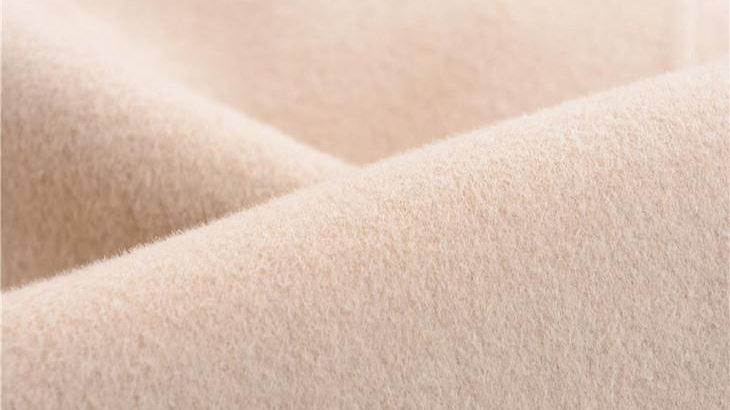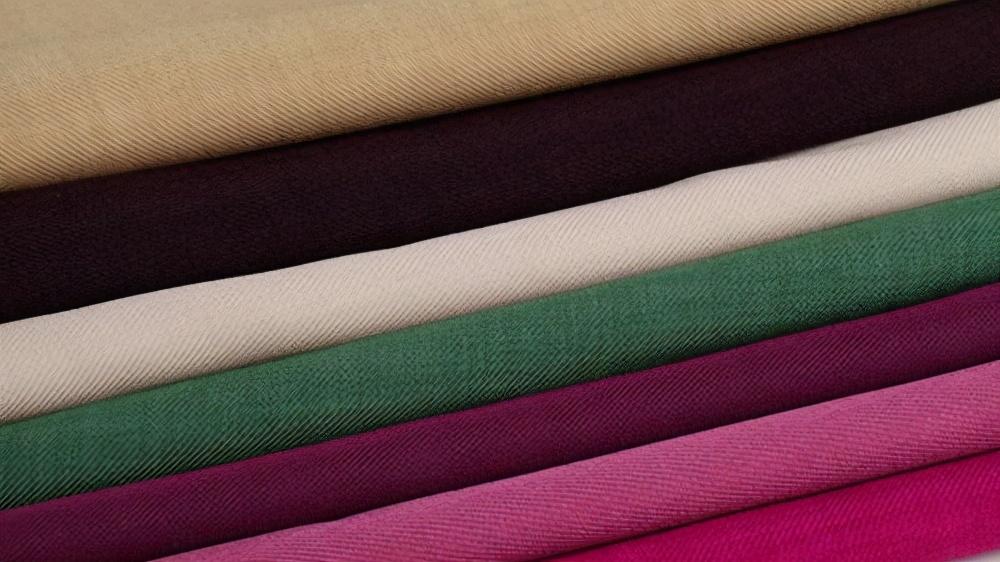Wool

Advantages : Soft and elastic to the touch, soft and natural luster, comfortable and beautiful to wear, high-end feel, good hygroscopicity, not easy to conduct heat, good warmth retention, anti-wrinkle, especially after garment processing and ironing, it has better pleat molding and garment Shape retention; Disadvantages: Not resistant to alkali, shrinkage, easy to wrinkle
.Notes: The washing temperature should not be too high, avoid washing and twisting hard, and avoid sun exposure. .Ironing points: Wet ironing method, iron the clothes from the reverse side.
Wool-polyester fabric

Refers to a fabric made of wool and polyester blended yarn, which is the most common type of blended wool fabric at present. The common ratio of wool-polyester blending is 45:55, which can not only maintain the advantages of wool, but also bring into play the advantages of polyester cotton fabrics.
.Advantages: strong hygroscopicity, good dyeing performance, soft hand feel, comfortable to wear, simple appearance, not easy to be eaten by insects, strong and durable.
Disadvantages: large shrinkage, poor elasticity, easy to wrinkle, poor shape retention, easy to mildew, slight fading, not acid resistant
.Notes: Clothing and cotton fabrics should be moisture-proof and mildew-proof during storage, use and storage; they should not be exposed to the sun for a long time, and the inner layer should be turned out when drying. They should not be soaked for a long time, and should not be wrung out. They should be moisture-proof, mildew-proof, and dry in the shade. Ironing points: Iron at low or medium temperatures; when ironing at medium temperatures, cover the clothes with a dry cloth to avoid aurora.
Cotton mercerized fabric

Advantages: After cotton fabric is treated with high-concentration caustic soda (wool), it feels smooth, has bright colors, silky luster, and is comfortable to wear. Disadvantages: Slight fading. Note: (Basically the same as cotton fabric)
.Explanation of terms: Mercerizing is a traditional processing technology for cotton fabrics. It uses low-number (high-count) cotton fabric, which is treated with high-concentration caustic soda to make it smooth and silky-like. It is then finished with high-quality softener, making it light, smooth and comfortable to wear.
T/C fabric (polyester/cotton)

Fabric technology: Made of fine or ultra-fine denier polyester fiber interwoven with high-count combed cotton (count 40, 60, 80, etc.). Advantages: The fabric feels crisp , smooth and bright in color. The body is elastic, has good moisture absorption and breathability, has a smooth surface, and has a certain rainproof function. Washing and maintenance: The washing temperature is below 30℃, the washing and soaking time does not exceed 30 minutes, do not bleach with chlorine, do not expose to the sun, do not wring out, do not tumble dry, suitable for drying in the shade, and pay attention to moisture. Important points for ironing: Do not dry clean or iron at 110℃ low temperature steam.
Wool and polyester blend

Advantages: Wool and polyester blend, light and thin texture, good wrinkle recovery performance. Sturdy and wear-resistant, easy to wash and quick-dry, dimensionally stable, long-lasting pleats
. Washing points: Soak in cold water for 15 minutes, then wash with general synthetic detergent. The temperature of the washing liquid should not exceed 45 degrees Celsius. The dirty areas of the collar and cuffs can be gently scrubbed with a soft brush. After cleaning, they can be gently twisted. Wring and place to dry in a cool and ventilated place. Do not expose to the sun or dry to avoid wrinkles due to overcooking.
T/R fabric (polyester/viscose blend)

Advantages: Strong, wrinkle-resistant, dimensionally stable, washable and wearable. It can improve the breathability of fabrics, reduce pilling and antistatic phenomena. Disadvantages: poor ironing performance. Washing points: can be washed with water and machine, do not use brushesong>

Wool is not resistant to alkali, so it needs to be washed with neutral detergent or soap tablets. Wool fabrics will shrink and deform in aqueous solutions above 30°C, so the washing temperature should not exceed 35°C. The aqueous detergent solution is usually prepared with room temperature (25°C) water. Do not use a washboard when washing. Even if you use a washing machine to wash, you should wash gently and the washing time should not be too long to prevent shrinkage. Do not twist the glue after washing, squeeze it with your hands to remove the water, and then drain it. When using a washing machine to dehydrate, half a minute is appropriate. It should be dried in a cool place and not exposed to strong sunlight to prevent the fabric from losing its luster and elasticity and causing a decrease in strength.
Viscose fabric

Viscose fiber has a large shrinkage rate and low wet strength. When washing, it should be soaked with water. Do not soak it for a long time. Viscose fiber fabric will become hard when exposed to water. Wash it gently when washing to avoid fluffing or cracking. . Use neutral detergent or low-alkali detergent. The temperature of the washing liquid cannot exceed 35°C. After washing, fold the clothes and squeeze out a lot of water. Do not twist them. Do not expose them to the sun after washing. They should be dried in a cool or ventilated place.
Polyester fabric

Soak in cold water for 15 minutes, then wash with general synthetic detergent. The temperature of the washing liquid should not exceed 35°C. You can use a brush to clean the dirty areas of the collar and cuffs. After washing, rinse well, twist it gently, and place it in a cool and ventilated place to dry. Do not expose it to the sun or dry it to avoid wrinkles due to heat. General high-end woolen clothing with exquisite workmanship
High-end clothing (such as suits, etc.) made of high-grade fabrics that are not too dirty and do not need to be washed in water, or clothing that cannot be washed in water, need to be dry cleaned; precious fur clothing should also be sent to a dry cleaner for dry cleaning.
Clothes that cannot be dry cleaned

Vinyl and polypropylene clothing have poor resistance to organic solvents and cannot be dry-cleaned. PU coated fabrics and other resin-finished fabrics cannot be dry cleaned.





